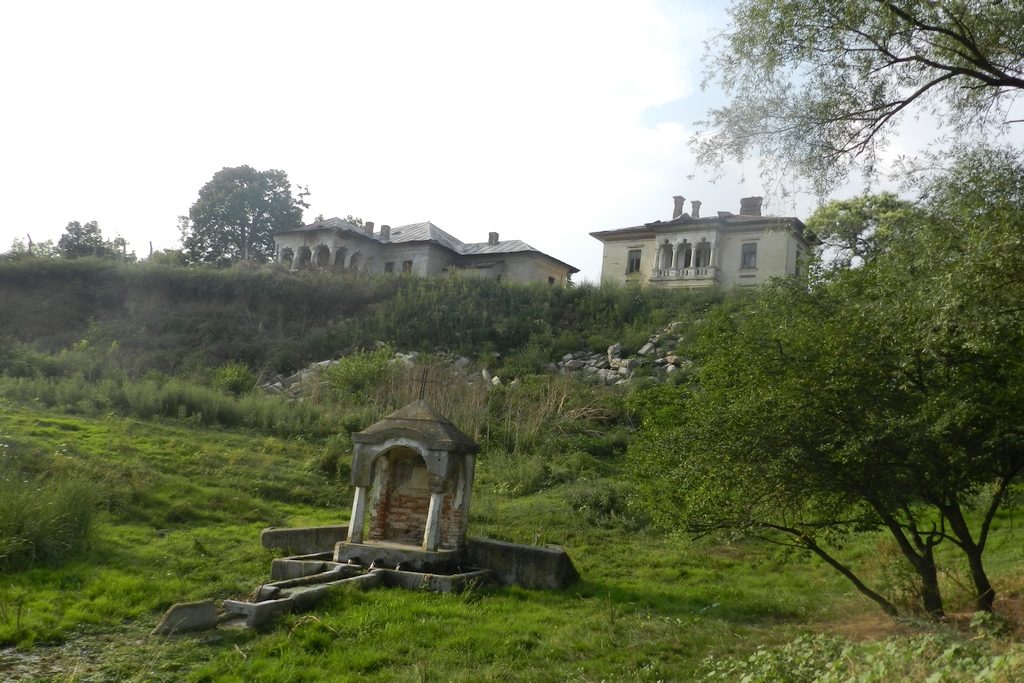

From the historical point of view, the Ensemble of the Court of the Coțofeni and the House of the Coțofeni date back to the middle of the XVIIIth century, being included on the list of historical monuments in the year 2004. Currently, this mansion presents an advanced state of deterioration. The building doesn’t have doors, windows, stairs, the coating also being fallen. The architecture of the construction reminds us about how imposing the mansion was in the ancient times. There can be observed the thick walls, made of brick. In the years 1930, Queen Maria of Romania was the guest in these houses. The descendants of the aristocrat Coțofeni were fighting in the court for regaining the mansion, which they want to re-condition. Replacing the yard from the XVIIth century of the High Steward Mihai Coțofeanu which was situated in the valley part of the Jiu is an exemple of residential architecture from Wallachia, remarkable for his architecture, for the two hundred years of un-interrupted living and for the way in which many generations considered that they must enrich it, putting their mark on the way in which this was kept in the period of up to the Second World War.
The most important, significant and spectacular architecture object is the house: „Bojarenhaus Spatar Predescu in Coţofeni (Dolj), 1765“, tells us Wilhelm Jänecke, in his Das rumänische Bauern und Bojarenhaus, Bukarest, 1918, where he also illustrates it with two photographs. Built up above some bolted rooms destined for the annexes, the livable level is accessible through a gazebo with exterior staircase; the repartition of the rooms is specific to the construction period, as are the bolts which cover each room.
At the end of the XIXth century, the property is divided between the two daughters of the family, and near the old house there is built up a new house, in a Neo-Romanian style. The house should have been ready in 1906, the year in which the landscapist architects E. Redont and E. Pinard – authors of the “Bibescu” Park from Craiova – are employed to project the park of the yard from Coțofeni. Which is exactly what they do, unifying the entire ensemble through a landscape construction, including the “fountain of the High Steward”, the one which collected a few springs from at the base of the sea front and which were still seen a few years ago. The image and the state of the constructions were excellent, as confess, for instance, the photographs taken on the occasion of the visit of Queen Maria from the years ’30. In 1949 or in 1952, the court passed onto the property of the Agronomic Institute from Craiova, then to a military unity, in order to remain until nowadays in the “custody” of the local administration. A restoration project initiated by the Ministry of Culture in 1998 wasn’t concluded because of the lack of funds. Even so, in the badly state in which it was, the court impressed even the ones which saw it recently.
For many times, this was considered the model for the famous Tanase Scatiu. Here there were taken the most important scenes from the homonym movie in the years ’70 by the director Dan Pita. Currently, the mansion is still in litigation between the two owners who would want to recondition it. The ensemble comprises: The House of the Coțofeni, The church “The Assumption of Mary”, the Neo – Romanian mansion, the Neo – Classical house, the Park, the Old school.
The mansion of the Coțofeni from the Deal was at his times a well – situated complex of buildings. From the top of the hill it would have supervised the area as a nest of vultures until far, to Craiova.
